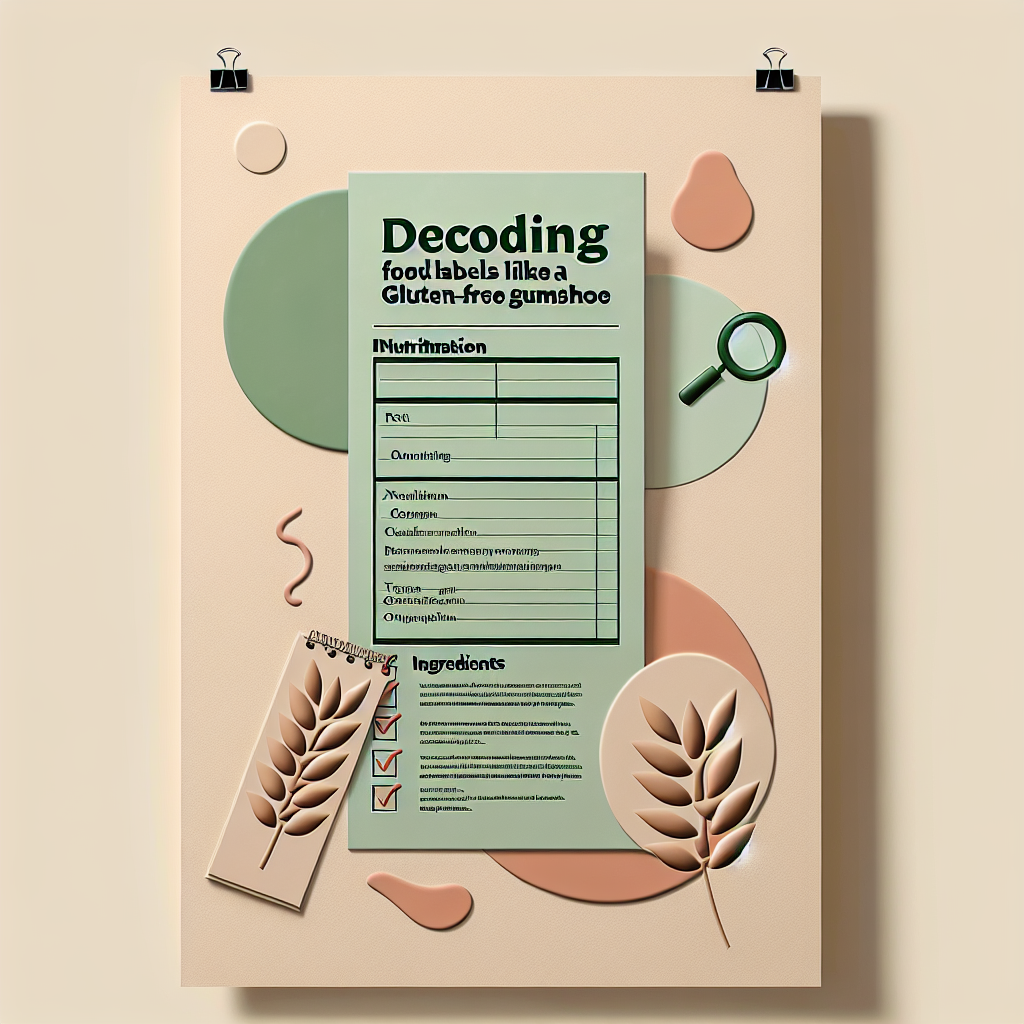One of the most difficult parts of life – gluten-free or not – is tackling the grocery store. But when you go gluten-free, it can feel like you’re stepping into unknown territory. Aisle after aisle of perceived ‘no-go’s lemon squashed wishes, and perhaps most frustratingly, hidden gluten.
Yes, my gluten-free friends, it’s hiding right there in your cart, lurking in your soups, your sauces, even your solutions for cleaning. To tackle these devious culprits, a new skill is needed: a sort of gluten sixth sense or in more practical terms, reading a label like a Gluten-Free gumshoe.
Labels can be both daunting and deceptive, whether it’s bizarrely phrased ingredient names or minute print that feels like it requires a magnifying glass to read (and let’s not even talk about pesky these typos). But fear not. I’m not going to leave you lost in labyrinthine lanes of groceries. Today, we’ll discuss how to decode food labels gf-style, so you can fill your shopping cart with confidence.
Remember that cautionary tale about the hidden gluten, sneaking into our meals like an unwanted guest? Well, let’s clear that up first. Gluten can indeed tiptoe its way into your food via a plethora of aliases. Step one in our detection process is knowing what these aliases look like. After all, you can’t play detective if you don’t know what your suspect looks like!
Apart from the familiar names of wheat, barley, rye, and cross-bred grains like triticale, gluten can also rock up on labels sneakily disguised as hydrolyzed vegetable protein, malt extract, or dextrin — to name a few. Find a complete list on our previous [guide to unfamiliar gluten-loaded ingredients](www.easyglutenfree/blog/guide-to-unfamiliar-gluten-loaded-ingredients). This list is a handy weapon in your GF arsenal to help you navigate the confusing world of food labels.
Next, we take our investigation deeper. This is where we delve into the food industry’s grey areas. Determining where gluten can hide comes down to knowing the clue words for potential cross-contamination. You might have seen phrases like, “processed in a facility that also processes wheat,” or “may contain wheat.”
This is generally a voluntary warning by manufacturers to inform consumers about potential cross-contamination risks. Remember, even a smidge of gluten can lead to reactions for those with celiac disease or non-celiac gluten sensitivity. It’s up to you, dear reader, to determine what level of risk you are willing to take with these products.
Let’s move on to Marcel Proust’s favourite aisle — the bakery. Most baked products scream wheat-wheat-wheat, but we’re resourceful, and we’re always up for a challenge. We have the fantastic advantage of the increasingly popular ‘Gluten-Free’ labels.
With a bright green ‘GF’ shining at us like a beacon of hope across a tumultuous gluten ocean, how can we resist? But, let’s examine the breadcrumbs, in a manner of speaking. What does it mean? And can we trust it? As discussed in our [previous post on understanding Gluten-Free labels](www.easyglutenfree/blog/understanding-gluten-free-labels), in the U.S., a food product can be labeled ‘Gluten-Free’ if it inherently has no gluten or if it doesn’t contain an ingredient with gluten above 20 parts per million.
The ‘Gluten-Free’ label can be tempting, but we should not let our guards down entirely. It’s always wise to double-check the ingredient list just to be sure as some manufacturers may differ in their definitions of ‘gluten-free’.
Like reading a gripping detective novel, attacking the labels on canned food, soups, and sauces can be solved with sheer persistence. These innocent-looking cans often have plenty of stabilizers and thickening agents, many with gluten playing the villain. Adopt Sherlock’s relentless pursuits of the hidden truth and decode the ingredients list for items like modified food starch or emulsifiers.
Snacking is a solace but can become a bit of a pickle. We need to watch out for gluten in unexpected culprits like chips, chocolates, or even dried fruits. Once again, the ingredient lists are your map to the hidden gluten. And when in doubt, contact the manufacturers.
Aha! There you go, gluten-free gumshoes, we cracked the enigma of the grocery store and transformed it into an adventure. Remember to be prepared, stay vigilant, and keep that handy list close (are you singling out the suspects in your mozarella?). The GF grocery trip may not be easy, but it can certainly be a victorious conquest in creating a safe and healthy lifestyle.
A final tip as we wrap up our investigation — shopping becomes a breezier task when you understand how to decipher the manufacturing codes. Be sure to check out our beginner’s [guide to understanding manufacturing codes](www.easyglutenfree/blog/beginners-guide-to-understanding-manufacturing-codes); after all, every good detective needs a solid set of skills!
When life gives you gluten, dear readers, you don an investigative hat, dive into the labels, and claim your gluten-free title with a bravura that leaves the supermarket in awe. Until next time!
**Category: Educational Guides**


